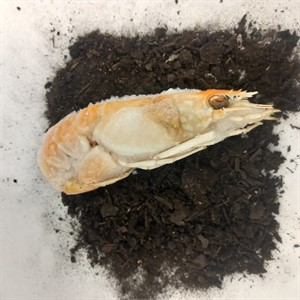Shellfish processing: turning 'waste' into 'resource'

The Challenge
The Allergen Monitoring Service at HSE's Science and Research
Centre was asked to quantify tropomyosin (TM) in an agricultural
compost containing added ground, untreated shell waste from seafood
processing. Tropomyosin is a known allergen found in the edible
parts of certain shellfish; respiratory exposure to TM can cause
allergic sensitisation, respiratory symptoms and occupational
asthma. In this case TM was measured at 0.42 ug/g of compost.
Some 50-85% of processed shellfish is 'waste'; estimated as
100,000 tonnes per annum. The agricultural sector has been looking
at various ways of turning this 'waste' - expensive to send to
landfill - into a 'resource' with value. This case study identifies
one route that has been tried, but where there is the possibility
that allergen exposure is shifted to a wider worker population.
The Solution
In 2005/2006 HSE funded the development of methods for
monitoring airborne levels of the major shellfish allergen, TM,
together with a number of site visits. Similar small scale studies
were carried out in 2011 and 2017 when further laboratory work
clarified the applicability of the TM immunoassay across many
edible shellfish species. Limited commercial monitoring by
occupational hygienists has also been carried out. In 2020 a
collaboration between HSE and the University of Manchester (UoM)
identified a 24-fold excess of occupational asthma in the UK
seafood processing sector in the period 1992-2017*. The work
continues: an HSE-funded research project, led by UoM, is currently
underway investigating symptoms and occupational exposure to
seafood allergens.
The Outcome
- A simplistic calculation suggests that activities in the
agricultural sector leading to high dust levels of 10 mg/m3 would
be associated with airborne TM levels of around 4 ng/m3. This is
relatively low compared with airborne TM levels in the UK shellfish
processing sector (median 60 ng/m3), although concerns have been
raised as to how well COSHH and exposure control are applied across
the agricultural sector**.
- Atmospheric monitoring amongst shellfish processors suggest
that significant allergen exposure occurs in that sector.
- While there may be good agricultural reasons to increase
significantly the amount of ground shell in compost, the grinding
of such shells to a fine material may itself be a higher-risk
activity.
- Organisations need to consider the regulatory implications of
processing shellfish 'waste'. Compost producers chemical
manufacturers, fish food producers and even battery manufacturers
are using this material.
The law requires organisations to adequately control exposure to
materials in the workplace that cause ill health. This is the Control of
Substances Hazardous to Health Regulations (COSHH). Harmful
substances include any materials or substances used or
created at work that could harm your health.
We're pleased to be able to share the results of this
study. For more information about our work in this area email the
team at registration.sample@hse.gov.uk.
- *Mason HJ, Carder M et al. Occupational asthma and its
causation in the UK seafood processing sector. Annals of Work
Exposure and Health (2020) 64(8) p817-825.
- **Median TM value of 60 ng/m3 (IQR 8-286 ng/m3 ) and a
90th percentile of 956 ng/m3, with a strongly right skewed
distribution.
Back to the top